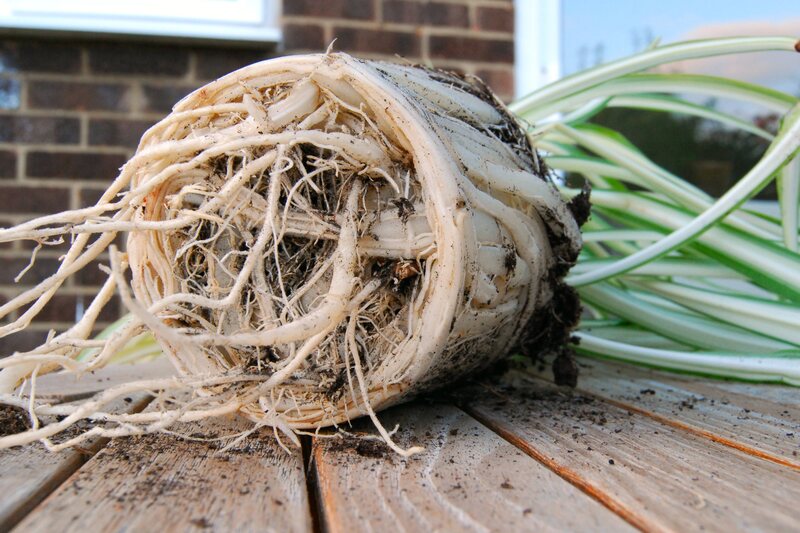Building Wind-Resistant Features in Your Garden
Posted on 21/06/2025
Building Wind-Resistant Features in Your Garden: A Comprehensive Guide
Are you tired of seeing your hard work in the garden decimated after every strong wind or storm? High winds can wreak havoc, uprooting plants, scattering debris, and damaging garden structures. But don't despair! Building wind-resistant features in your garden is not only possible, but it can also transform your outdoor space into a resilient, healthy, and productive oasis. Whether you live in a breezy coastal area or face occasional storms, this comprehensive guide will help you design a garden that bravely withstands the toughest winds.

Why Focus on Wind Resistance in Your Garden?
Wind is an inevitable element that every gardener will encounter. While gentle breezes improve air circulation and pollinate flowers, strong winds can cause:
- Broken stems and branches
- Uprooted or toppled plants
- Soil erosion and drying out
- Damage to garden structures and fencing
- Increased water loss from evaporation
Understanding the importance of incorporating wind-resistant features ensures your garden remains beautiful and healthy year-round, regardless of the forecast.
Assessing Your Garden's Wind Exposure
Before you start building wind-resistant features in your garden, you need to assess its wind exposure. Here are a few steps to help you identify vulnerable spots:
- Map the Prevailing Wind Directions: Use a wind vane or local weather data to understand which direction most winds come from.
- Observe Patterns: Notice where plants appear wind-damaged and where wind-driven erosion is worse.
- Examine Surroundings: Buildings, trees, hills, and fences can all influence how wind moves across your space.
Knowing this helps you position windproofing solutions strategically, maximizing their effectiveness and protecting your most delicate plants.
Core Strategies for Creating a Wind-Resilient Garden
1. Planting Effective Windbreaks and Shelterbelts
One of the best ways to build wind resistance in your garden is by installing windbreaks. These can dramatically reduce the wind velocity and shelter your vulnerable plants and structures.
-
Living Windbreaks
Using dense hedges or rows of sturdy, wind-resistant trees and shrubs is both eco-friendly and attractive. Plant multiple layers: tall trees at the back, medium-height shrubs in the middle, and low-growing groundcovers at the front. Popular choices for living windbreaks include privet, arborvitae, holly, boxwood, and juniper. For coastal gardens, salt-tolerant varieties like ilex or pine are excellent. -
Structural Windbreaks
Consider timber fences, lattice screens, or stone walls. While solid walls stop all wind, they often create turbulence, so semi-permeable options (like slatted fences or trellis) are best--they slow the wind gradually and prevent damaging eddies.
Tip: Place your windbreak at a distance of 6-8 times the height of the structure from your protected zone for maximum benefit.
2. Selecting Wind-Resistant Plants
Some plants naturally fend off strong winds. Opt for varieties with flexible stems, small leaves, and deep root systems, as they endure gusty weather much better. Examples include:
- Grasses: Feather reed grass, switchgrass, fountain grass
- Shrubs: Holly, juniper, barberry, euonymus
- Perennials: Daylilies, lavender, sedum, iris
Place these wind-tolerant plants on the garden's perimeter to act as a buffer, and shelter more sensitive specimens inside.
3. Strategic Plant Placement & Grouping
Consider grouping plants closely together for mutual support. Interplantings help reduce wind speed at ground level and prevent soil erosion. Place crops or flowers with similar wind tolerance together, and avoid isolating delicate species in exposed locations.
4. Strengthening Soil Health for Wind Resistance
Wind not only damages plants but can also strip away topsoil and disrupt root systems. Healthy, moistened soil resists being carried away by the wind. You can promote resilient soil by:
- Adding organic matter (compost, mulch, manure)
- Planting groundcovers to hold the soil
- Using landscape fabrics where necessary
- Maintaining gentle slopes instead of steep banks
Extra Tip: Water soil early in the day before a forecasted wind event--wet soil is much less likely to blow away.
5. Choosing Wind-Proof Garden Structures
If you use garden structures like greenhouses, sheds, or pergolas, make sure they're built to stand up to the wind:
- Anchor structures securely with ground spikes or concrete footings
- Ensure fences, gates, and trellises are properly braced
- Use strong, weather-resistant materials such as pressure-treated wood or metal
- Design roofs with gentle slopes so wind flows over rather than under them
- Keep greenhouses ventilated to equalize air pressure during storms
Regular maintenance (tightening bolts, checking for rot, replacing damaged panels) also helps extend the life and resistance of your outdoor buildings.
Additional Techniques for Building a Wind-Resistant Garden
Mulching and Ground Protection
Wind can dry and erode soil quickly. Lay down a thick layer of mulch (wood chips, bark, compost, or straw) to help hold soil moisture and weight the ground. This also protects roots and young shoots during harsh weather.
Staking and Supporting Plants
For large, delicate, or newly transplanted plants, use stakes or cages. Support them firmly, but allow for some movement so they don't snap under pressure. Flexible ties or soft cloth work best, as they won't cut into stems.
Designing Wind-Tolerant Planting Beds
Raised beds with sturdy edging (stone, brick, heavy timber) are less prone to wind erosion. Edging also creates a psychological "barrier" that reduces wind's impact on plants within. In very exposed gardens, consider low "ha-ha" walls, berms, or sunken beds for the most delicate species.
Creating Microclimates with Garden Design
Use your existing features--like sheds, fences, and large shrubs--to create varied microclimates. For example, plant wind-sensitive vegetables on the lee side (downwind) of a shed, or tuck your favorite flowers into the corner of a tall fence. Even strategic placement of large pots and garden art can break up wind patterns!
Best Plants for Wind-Resistant Gardens
Here is a curated list of plants renowned for their wind tolerance--perfect for use as windbreaks or within exposed beds:
- Trees: Scots pine, hawthorn, Monterey cypress, mountain ash, sycamore
- Shrubs: Escallonia, tamarisk, sea buckthorn, elaeagnus
- Perennials/Grasses: Euphorbia, achillea, Russian sage, pampas grass, blue fescue
- Groundcovers: Creeping thyme, cotoneaster, vinca minor
Using a diverse mix from this list can provide layered shelter and bolster aesthetic appeal.
Common Mistakes and How to Avoid Them
Many gardeners inadvertently make their gardens more vulnerable to wind. Watch out for these common pitfalls:
- Overreliance on Solid Fencing: Solid barriers can worsen turbulence. Use semi-permeable or layered screens for best results.
- Poor Plant Selection: Avoid tall, brittle plants with shallow roots in exposed beds.
- Neglecting Maintenance: Always check that structures and supports remain in good repair.
- Ignoring Soil Health: Neglecting to mulch, water, or plant groundcovers can worsen erosion and plant stress.
- Random Placement: Each feature should be positioned with prevailing winds in mind, not just aesthetics.

Long-Term Benefits of a Wind-Resistant Garden
By implementing wind-resistant features, your garden will experience:
- Healthier, stronger growth in all seasons
- Less physical damage after storms and gales
- Improved soil quality and moisture retention
- Reduced maintenance and replanting costs
- A more attractive and enjoyable space year-round
Moreover, adopting these techniques can contribute to local biodiversity and make your home landscape more sustainable for years to come.
Conclusion: Building a Wind-Resistant Garden is Within Your Reach
Building wind-resistant features in your garden may require some thoughtful planning and effort, but the rewards are well worth it. By using carefully chosen wind-resistant plants, constructing effective windbreaks, caring for your soil, and making strategic use of garden structures, you'll be able to withstand even the harshest gales. Remember to assess your site, tailor your approach to your climate, and focus on both immediate protection and long-term resilience. With these tips and tricks, your garden will not only survive--it will thrive in the face of the wind.

